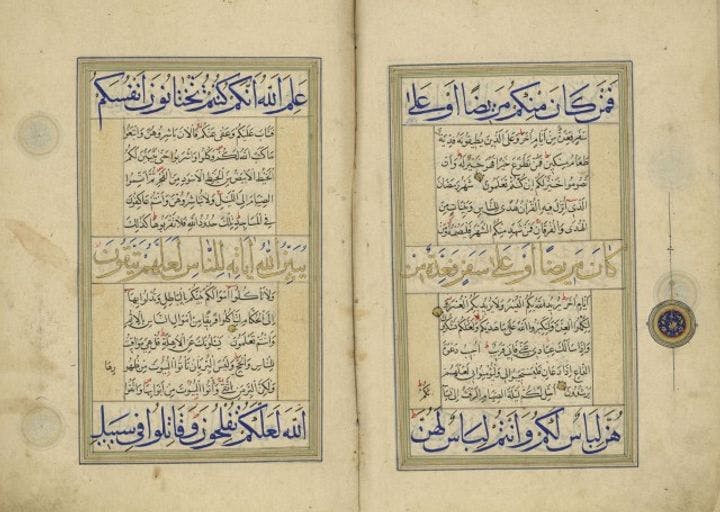Spring 2010
The Islamic Word
– The Wilson Quarterly
The Islamic world has long resisted the concept of a printed Qur’an.
In the early 18th century, a small group of Turkish diplomats proposed the establishment of an Ottoman printing house. The Ottoman Empire had allowed Jews and other minorities to print books in Hebrew and other languages for decades, but many Turks thought it was a sin to print the Qur’an and other books about Islamic law. Constantinople’s scribes (perhaps as many as 90,000) protested the possible loss of their livelihoods. Anticipating religious resistance, one of the diplomats requested a fatwa (religious pronouncement) from the Shaykh al-Islam, the head of the Ottoman religious bureaucracy, endorsing printing. The shaykh complied in part: Secular Arabic books could roll off the presses, but Islamic texts must continue to be transcribed by hand. In 1727, the first Arabic printing house opened in Constantinople (now Istanbul).
Mohammed Ghaly, a professor of Islamic law and theology at Leiden University in the Netherlands, writes that the Islamic scholarly community of that time had four major objections to printing Islamic texts: the use of materials regarded as impure (such as brushes made from boar bristles) in the printing process; the heavy pressure required for printing, which was considered inconsistent with the manner in which sacred texts should be handled; the possibility of mass-producing errors; and the risk that non- Muslim printers would come into contact with the Qur’an, which was strictly forbidden.
Beyond these legal arguments, Ghaly writes that printing was “needless” in Islamic society because of the primacy of a Qur’anic oral tradition. In fact, the word Qur’an is related to the Arabic verb meaning “to recite, read aloud.” The oral tradition, not written texts, was authoritative, and it was incumbent upon all Muslims to memorize the Qur’an. Even today, Ghaly writes, Qur’anic recitation forms “a significant part of the ‘auditory’ background of everyday life.” So while common people in the Christian world had little access to the Bible until Gutenberg’s printing press (mid-15th century), the text of the Qur’an was well known by Muslim believers.
With time, the legal arguments subsided. Impure materials were removed from the printing process, the risk of errors was diminished by careful editing, and Muslims were trained to do the work. In 1832, more than a century after Shaykh al-Islam’s decree, the first printed edition of the Qur’an came off the presses in Egypt, although it was recalled shortly thereafter because it contained errors. Today, of course, the Qur’an is widely available, not just in printed form but all over the Internet on sites such as www.Quran.com.
* * *
Photo courtesy of Wikimedia Commons
